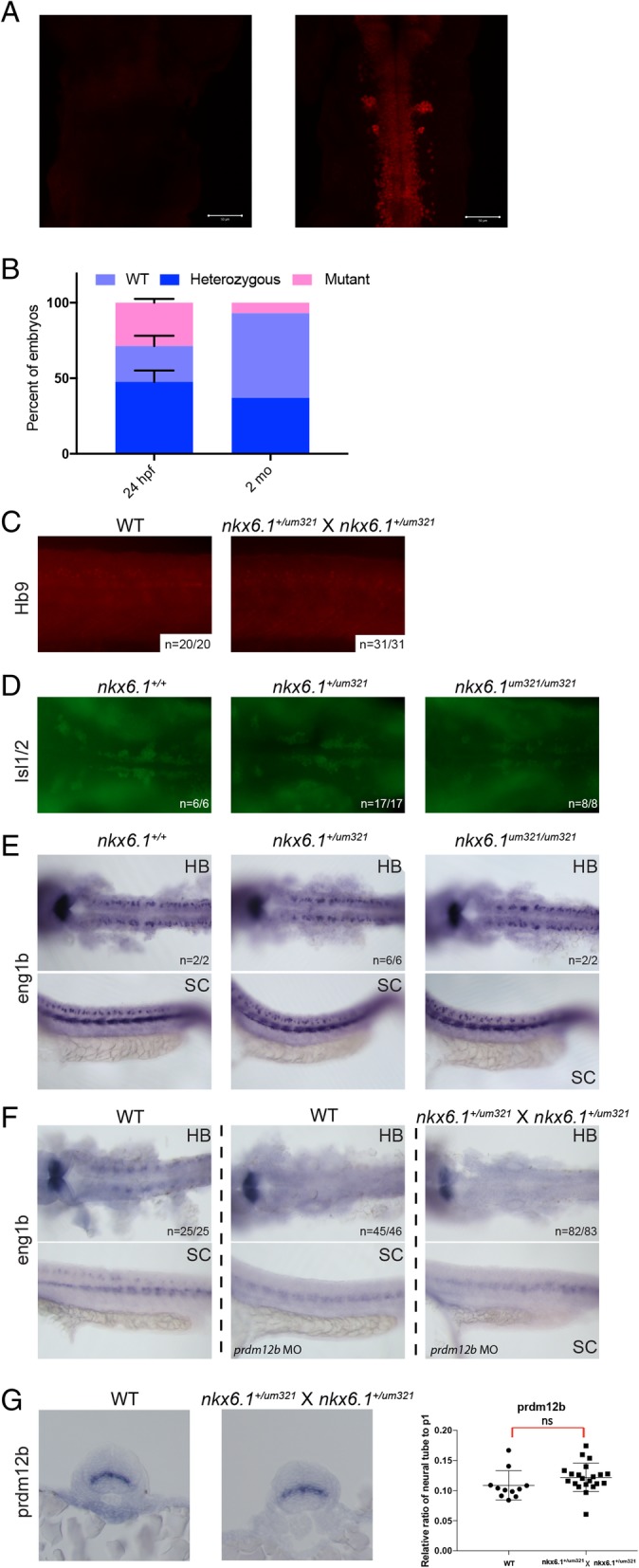Fig. 7.

prdm12b does not maintain the p1 domain by repressing nkx6.1. a. Anti-Nkx6.1 immunostaining of nkx6.1um321/um321 mutant (left) and wildtype (right) embryos at 30hpf. b. Chart indicating the frequency of each genotype at various time points in broods from crosses of nkx6.1+/um321 heterozygous mutants. c. Hb9 immunostaining in wildtype (left) versus a cross of nkx6.1+/um321 heterozygous embryos (right) at 33hpf. d. Islet-1/2 immunostaining of 50hpf embryos from a cross of nkx6.1+/um321 heterozygotes. e. Expression of eng1b in 24hpf embryos from a cross of nkx6.1+/um321 heterozygotes. f. Expression of eng1b in 24hpf uninjected wildtype embryos (left panels), 24hpf prdm12b MO-injected wildtype embryos (middle panels) and 24hpf prdm12b MO-injected embryos from a cross of nkx6.1+/um321 heterozygotes (right panels). g. Expression of prdm12b in a representative wildtype embryo (left panel) and a representative embryo from a cross of nkx6.1+/um321 heterozygotes (middle panel) at 24hpf. Right panel shows quantification of the size of the prdm12b expression domain in 11 wildtype embryos and 20 embryos from a cross of nkx6.1+/um321 heterozygotes. Numbers in panels indicate the fraction of embryos displaying the phenotype shown
